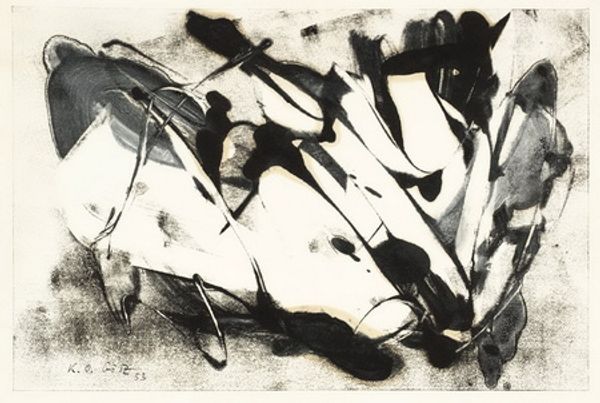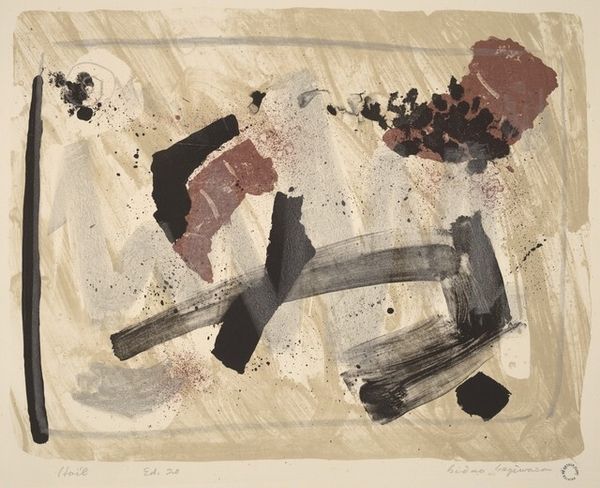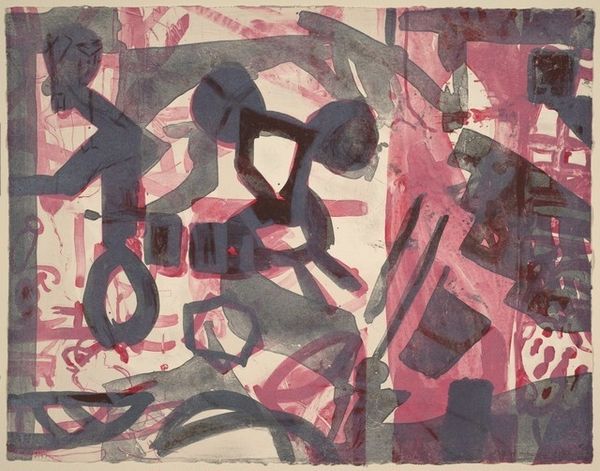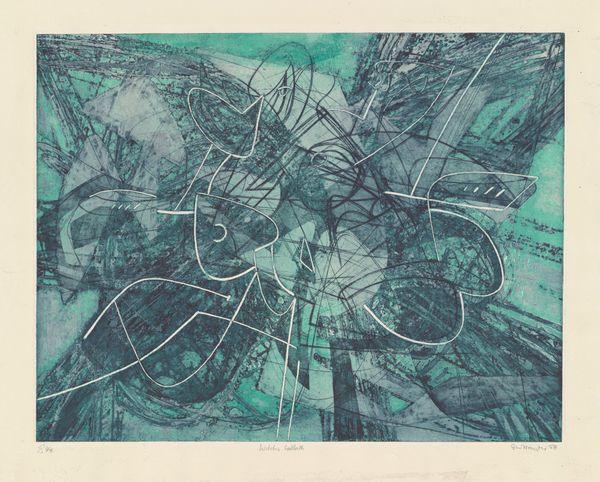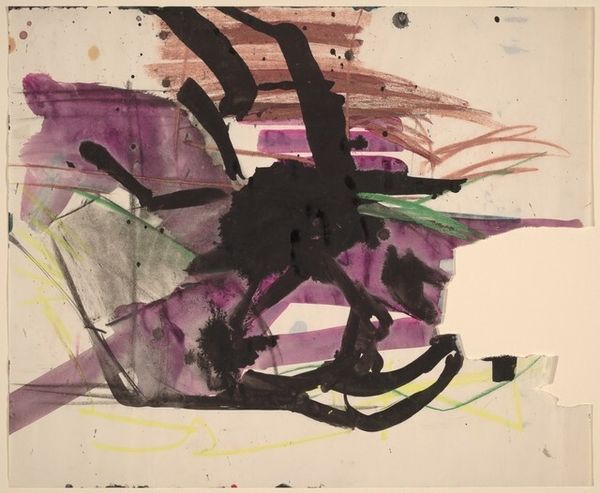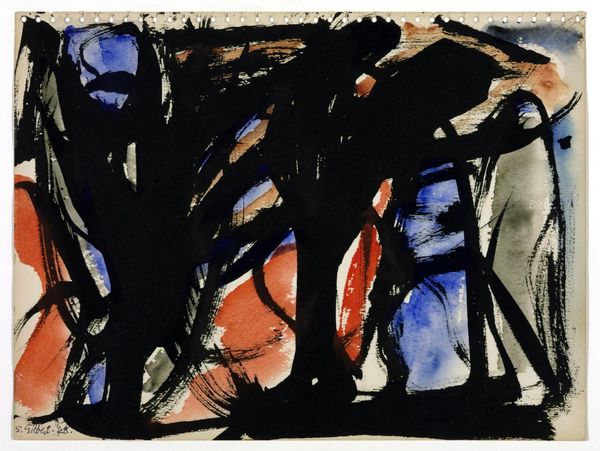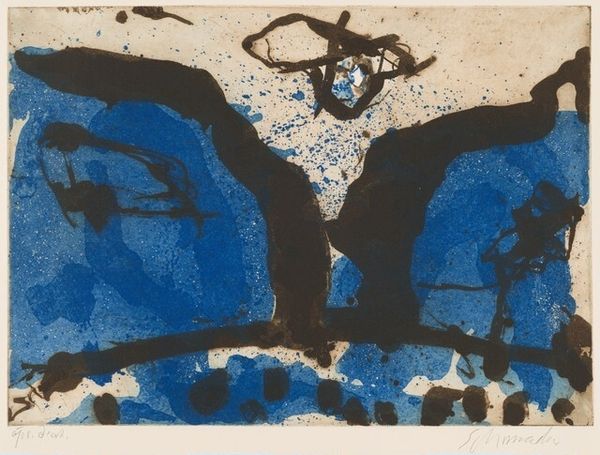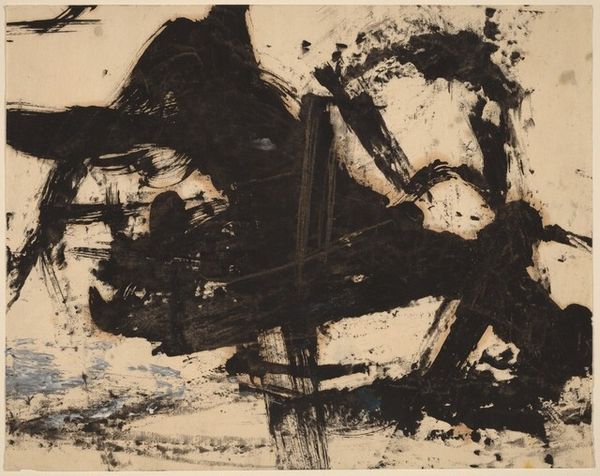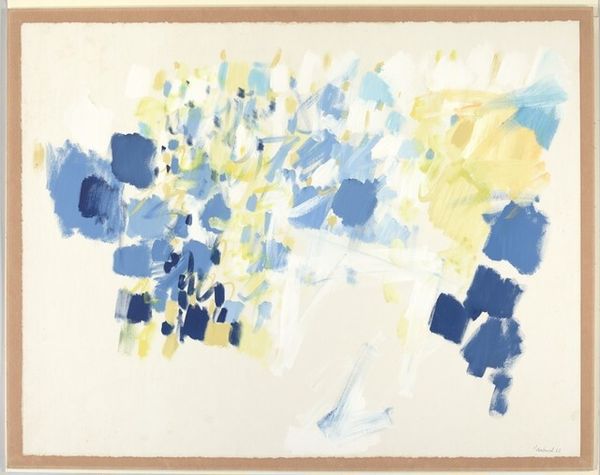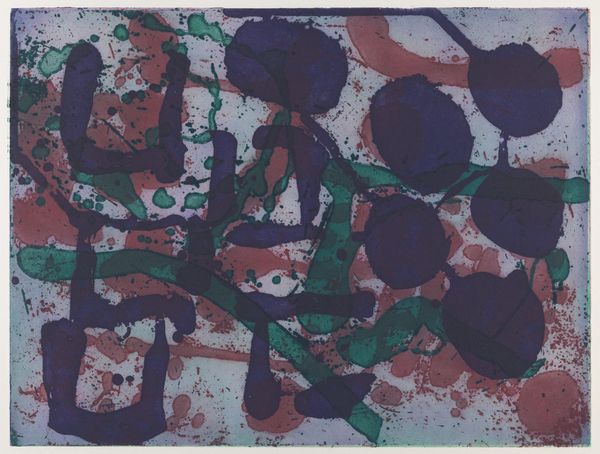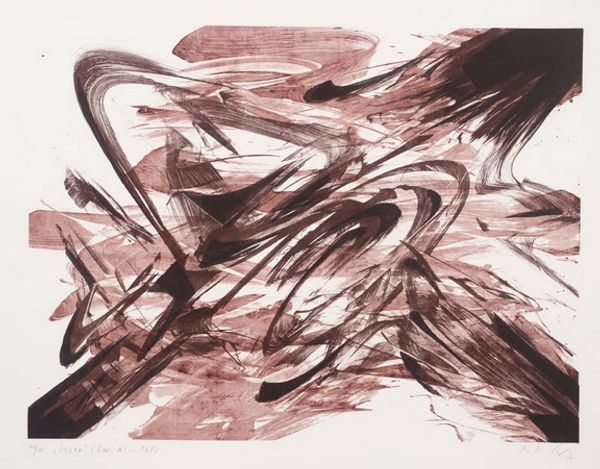
Copyright: National Gallery of Art: CC0 1.0
Editor: Here we have Ansei Uchima’s "Waltz of the Wind" from 1957, a woodblock print. The composition is just a flurry of lines and shapes! It feels so dynamic, almost like you can see the wind swirling. How do you interpret this work? Curator: Formally, this print presents a fascinating study in the interplay between line, texture, and color. Observe how the artist utilizes line to create a sense of movement, and the contrast of solid blocks against textured fields generates visual tension. How do you read the black lines against the textured background? Editor: They seem to anchor the chaos of the blue and white lines. They are so bold! Is there a reason Uchima chose to work in woodblock print specifically for a piece about something so fluid? Curator: Woodblock printing is uniquely suited to capturing the dynamic energy of this piece, despite the carving’s inherent linearity. Note the registration, and the overlapping layers of color. It invites us to consider the intentionality of each mark, and the sequence in which they were applied. The materiality enhances its overall dynamism, would you agree? Editor: Yes, I do. Thinking about it, that limitation of woodblock printing and its textures really do make it feel… deliberate. Curator: Indeed. And it speaks to the genius of Uchima that through rigorous engagement with the properties of his medium, he created this seemingly chaotic picture. It gives new perspective on my understanding of the semiotics of chaos. Editor: It's incredible how analyzing the basic components can unlock such a deeper understanding. Curator: Absolutely, recognizing those basic forms reveals the complexity of an art piece.
Comments
No comments
Be the first to comment and join the conversation on the ultimate creative platform.
